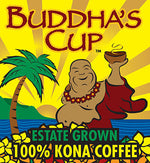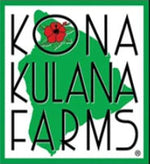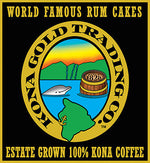Aloha and E komo mai (Welcome) to our ohana (family) at Buddha's Cup!
We extend our warmest greetings as we embark on a journey to demystify the intricate process of coffee grading and uncover the exceptional qualities of Kona coffee.
In this article, we will explore what makes Kona coffee unique, understand the significance of coffee grading, and delve into the meticulous process that ensures the superior quality of our cherished Kona coffee beans.
Coffee Grading: An Overview

Coffee grading plays a pivotal role in determining the quality and characteristics of the coffee beans we enjoy in our cups.
It is a comprehensive evaluation process that takes into account various factors such as size, shape, density, and defects.
By meticulously grading coffee beans, we can ensure consistency and excellence, delivering an exceptional taste experience to our valued customers.

Kona Coffee: A Unique Blend
Kona coffee is renowned for its unparalleled flavor and distinctive characteristics. Grown in the illustrious Kona region of Hawaii, this coffee variety flourishes under the ideal combination of volcanic soil, favorable climate, and careful cultivation techniques. The result is a cup of coffee that captivates the senses with its exceptional aroma, smoothness, and vibrant flavors.
What sets Kona coffee apart from other varieties is the unique environment in which it is cultivated. The volcanic soil imparts minerals and nutrients to the coffee plants, enhancing the flavor complexity and depth. The region's optimal climate, with its sunny mornings and afternoon shade, ensures a slow and gradual maturation process, allowing the coffee cherries to develop their distinct qualities.
The Grading Process of Kona Coffee

Now, let's delve into the intricate process that determines the grading of Kona coffee.
To ensure consistency and excellence, the beans are meticulously sorted and evaluated based on specific criteria. Size is an important factor in the grading process, as larger beans tend to have more developed flavors. Shape is also taken into consideration, as it can influence the consistency of the roast and extraction process.
Density plays a crucial role in the grading of Kona coffee. Beans with higher density tend to have a more concentrated flavor profile, delivering a robust and full-bodied taste experience. On the other hand, beans with lower density may exhibit more delicate and nuanced flavors.
Furthermore, the grading process meticulously examines the beans for defects, such as broken or discolored beans, insect damage, or other imperfections. Beans with a higher number of defects are assigned a lower grade, as they may impact the overall quality and flavor of the final brew. This rigorous evaluation ensures that only the finest beans, free from significant defects, are selected for the top grades of Kona coffee.
Check out all our current promotions!

Savoring Quality Kona Coffee
We invite you to savor the exquisite quality of Kona coffee and appreciate the intricate grading process that ensures its superiority. From the careful cultivation in the fertile lands of Kona to the meticulous sorting and evaluation, every step is taken with utmost dedication to deliver an unparalleled coffee experience.
Mahalo nui loa (Thank you very much) for joining us on this enlightening journey to demystify the grading of Kona coffee. We hope this article has provided you with valuable insights into the grading process and the exceptional qualities of Kona coffee.
A hui hou (Until we meet again)! Get in touch with us today.
FAQs
1. How does the grading of Kona coffee affect its taste?
The grading of Kona coffee plays a crucial role in determining its taste. Higher grades of Kona coffee are composed of larger, more meticulously sorted beans. These beans tend to exhibit a more developed flavor profile, with rich and complex notes. On the other hand, lower grades may have slightly different flavor characteristics, offering a range of tastes from delicate and nuanced to more subtle.

2. Are all defects in coffee beans considered undesirable?
While defects in coffee beans are generally considered undesirable, not all defects have the same impact on the final cup. During the grading process, beans are carefully examined for defects such as broken or discolored beans, insect damage, or other imperfections. While a higher number of defects can lower the grade of the beans, some defects may have minimal impact on the overall quality and flavor.
The grading process ensures that only beans with significant defects are excluded from the higher grades of Kona coffee, ensuring a superior taste experience.
3. Can I expect consistent quality across different grades of Kona coffee?
While all grades of Kona coffee maintain a high level of excellence, there are differences in flavor characteristics and overall taste experience. Higher grades are composed of larger and more meticulously sorted beans, resulting in a more refined and distinctive flavor. As we move down the grading scale, the flavor profile may exhibit slight variations, offering a range of taste experiences.













